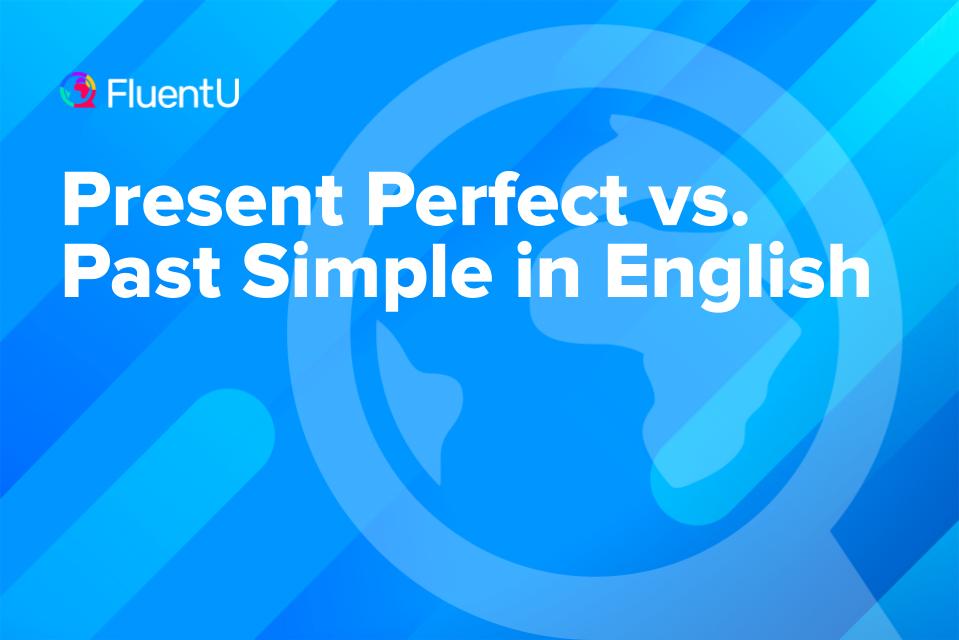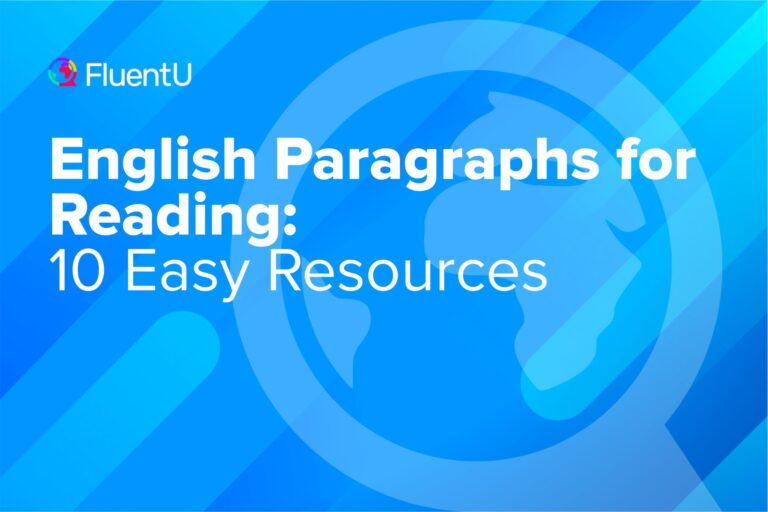Present Perfect vs. Past Simple in English

As a language learner, you may be quite confused about the difference between the present perfect and the simple past tenses. After all, they both refer to events that already happened and are now in the past.
Essentially, the simple past refers to actions that have already finished. The present perfect is used when referring to actions that have happened recently, or when a time isn’t specified.
Download: This blog post is available as a convenient and portable PDF that you can take anywhere. Click here to get a copy. (Download)
Present Perfect vs. Past Simple: The Key Differences
Here’s a quick overview of the key differences between the present perfect tense and the past simple tense:
We use the simple past to refer to an event/action that has already finished or happened, and the time is usually certain and specified. It always refers to finished time. We also use the simple past when we’re more interested in the “telling” of an action and not on the results of the action.
On the other hand, the present perfect is used when the event/action took place very recently or the time isn’t specified. The present perfect is also used when we’re more interested in the results or consequences of the action/event, as the result is usually linked to the present.
The simple past uses a single verb (the simple past form of the verb) while the present perfect uses two verbs (has/have + participle form of the verb).
Here are some examples:
| Present Perfect | Past Simple |
| I have finished my homework | I finished my homework |
| She has visited Paris | She visited Paris |
| They have eaten lunch | They ate lunch |
The English Tenses: A Brief Introduction
Tenses are a way of measuring time. They tell us whether a particular action has already happened, is happening or will happen. Every sentence we speak or write in English is in one of these tenses.
The verbs we use tell us which tense is being used. If the verb form changes, the tense changes (and vice versa).
In English, there are three main tenses: past, present and future. When we talk about any event or action (let’s say, eating a cookie), it can only happen in one of these three times:
It happened yesterday or even earlier (Past): I talked to Mary yesterday.
It happened today or right now (Present): I am talking to Mary on the phone.
It will happen tomorrow or even later (Future): I will talk tho Mary at work tomorrow.
Now, each of these three tenses can be further divided into four “sub” tenses. These are simple, continuous, perfect and perfect continuous.
Focus on how the verb (“to read”) is changing in each sentence below.
Past Tense:
Simple Past: I talked to Mary yesterday.
Past Continuous: I was talking to Mary when you came in.
Past Perfect: I had talked to Mary before eating dinner.
Past Perfect Continuous: I had been talking to Mary for two hours before we finally hung up.
Present Tense:
Simple Present: I talk to Mary at least once a day.
Present Continuous: I am talking to Mary right now.
Present Perfect: I have talked to Mary before.
Present Perfect Continuous: I have been talking to Mary for three hours now.
Future Tense:
Simple Future: I will talk to Mary tomorrow.
Future Continuous: I will be talking to Mary on the train ride tomorrow.
Future Perfect: I will have talked to Mary by next week.
Future Perfect Continuous: I will have been talking to Mary for two hours at 3:00.
Now that you’ve reviewed the basics of tenses, let’s move on to the difference between past simple and present perfect. If you still aren’t feeling confident, consider brushing up on your knowledge of how to use tenses before continuing.
The Past Simple
The past simple (also called the simple past) is the tense we use to talk about any action or event that has already happened.
When to Use It
We use this tense when we know the exact or specific details of the time of the event (such as yesterday, the previous winter, last year, five hours ago and so on). In other words, the event is already over and finished.
Here are some examples:
I wrote a few lines of the story in my notebook last week.
He went on an exchange program two years ago.
She ate the entire pie yesterday.
I talked to Maria on the phone five minutes ago.
We may also use this tense when we want to focus on telling people about the action.
Here are two examples:
In both cases, the focus is on telling of the action (“dancing a lot,” “walking home”) that took place in the past and not on the results or consequences of the action. We’re just talking about an event in the past and aren’t discussing the possible effects of it.
To sum up, we use the simple past to refer to an event or an action that took place in “finished time” or to simply focus on talking about the action itself.
Verb Forms to Use with the Past Simple
To write a sentence in the simple past, we have to convert the verb to its simple past form.
But verb conjugation can be tricky to get a hang of.
For regular verbs, there are a few rules regarding how to convert them. But for irregular verbs, you need to memorize the verb forms.
Let’s take a regular verb like to walk and an irregular verb like to eat, for example.
She walked home from the party. (We added an “-ed” to “walk”)
He ate a pizza for dinner. (“Eat” changes to “ate”)
If you’re feeling intimidated or confused about verb conjugations, don’t worry! All it takes is a bit of practice and soon it’ll become second nature. Here are some more example of past simple conjugations:
To cook — cooked
To study — studied
To play — played
To break — broke
To catch — caught
The Present Perfect
We normally use the present perfect tense to talk about events that have already happened. These events may be ongoing or completed but usually, the events took place recently and the time is unspecified.
If you’re still a little confused, here’s a video from the FluentU English YouTube channel. It breaks down the present perfect tense using a story.
When to Use It
Present perfect is listed under the present tense because the event usually took place just now or recently. Therefore, it’s still “connected” to the present.
Take a look at these two examples:
I have written a few lines already. (It took place recently.)
My husband and I have known each other for five years now. (Even though the time is mentioned here, the action is still ongoing or continuing into the present—we still know each other.)
But in most cases of the present perfect, the time of the action is “unfinished” or unspecified, like in this example:
He has been on an exchange program to Sweden. (The time isn’t specified)
We also use this tense when the focus is more on the “result” of the action instead of the “telling” of the action. For example:
She has eaten the pie all by herself. (The focus is on the result of the action—the pie is now finished by her!)
Have you done your homework? (A yes/no answer is wanted.)
Verb Forms to Use with the Present Perfect
In the simple past, we use just one verb and it’s used in the “past” form.
In the present perfect, we use the helping verbs has or have along with the “participle” form of the main verb (which is the verb that indicates the action).
In other words, to convert a verb to the present perfect, we can use this simple formula:
has/have + participle form of the verb
So if the verb is to fly, then the present perfect form would be: has/have + flown, as in the following examples:
For regular verbs, the participle and simple past forms are the same. For irregular verbs, the participle forms must be memorized.
Past Tense vs. Past Participle | FluentU English Blog
The past tense vs. past participle is one of the most difficult aspects of English grammar. If you’re still trying to grasp the English preterite, never fear. Read this…
Practice What You’ve Learned
Now that you know the differences, it’s time to put your knowledge to test.
Here are a few simple and short quizzes and exercises that test your understanding of these two tenses.
- English-hilfen.de: This is a simple fill-in-the-blanks quiz where you have to choose the right word or phrase from a drop-down list. It’s a pretty good way to know if you’ve grasped the basics or not.
- English Page: Another simple one, in this quiz you have to fill-in-the-blanks for a paragraph by using the right form of the verb. To make it easier, they also offer hints.
- English Grammar Online: This site also summarizes the differences between the two tenses, followed by several in-depth exercises and three practice tests. Try these out once you’re confident enough.
- AgendaWeb: Finally, if you’re feeling brave enough, you can try the exercises listed here. There are plenty of them so you can try solving them from time to time as revision or for extra practice.
You can also check out this YouTube video from Learn English With Rebecca to learn more about the differences:
Besides this list, you can also try to practice by watching these tenses in action. In other words, you should get a lot of exposure to English conversations and sentences. Carefully study phrases for when the tenses are used and see how the verbs are working with the other words around it.
This kind of practice is also pretty easy to do. You can read English books or magazines, listen to English music or watch English videos, TV shows and movies. Basically, you can consume any English media that would show natural-sounding sentences!
For a more guided approach, the language learning program FluentU can help show the present perfect and the past simple in context.
FluentU takes authentic videos—like music videos, movie trailers, news and inspiring talks—and turns them into personalized language learning lessons.
You can try FluentU for free for 2 weeks. Check out the website or download the iOS app or Android app.
P.S. Click here to take advantage of our current sale! (Expires at the end of this month.)

I hope this post has cleared the confusion between the present perfect and the past simple tenses. Now you know how you can still use present tense to talk about a past event.
The good news is, the more you practice the better you’ll be. So be consistent and motivated about learning and you’ll be fluent in English before you know it!c
Download: This blog post is available as a convenient and portable PDF that you can take anywhere. Click here to get a copy. (Download)
And One More Thing...
If you like learning English through movies and online media, you should also check out FluentU. FluentU lets you learn English from popular talk shows, catchy music videos and funny commercials, as you can see here:
The FluentU app and website makes it really easy to watch English videos. There are captions that are interactive. That means you can tap on any word to see an image, definition, and useful examples.
For example, when you tap on the word "searching," you see this:
Learn all the vocabulary in any video with quizzes. Swipe left or right to see more examples for the word you’re learning.

FluentU helps you learn fast with useful questions and multiple examples. Learn more.
The best part? FluentU remembers the vocabulary that you’re learning. It gives you extra practice with difficult words—and reminds you when it’s time to review what you’ve learned. You have a truly personalized experience.
Start using the FluentU website on your computer or tablet or, better yet, download the FluentU app from the iTunes or Google Play store. Click here to take advantage of our current sale! (Expires at the end of this month.)










